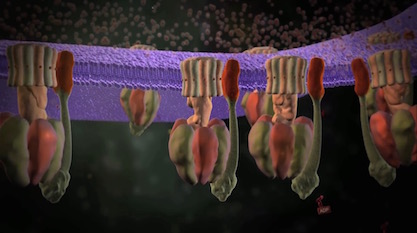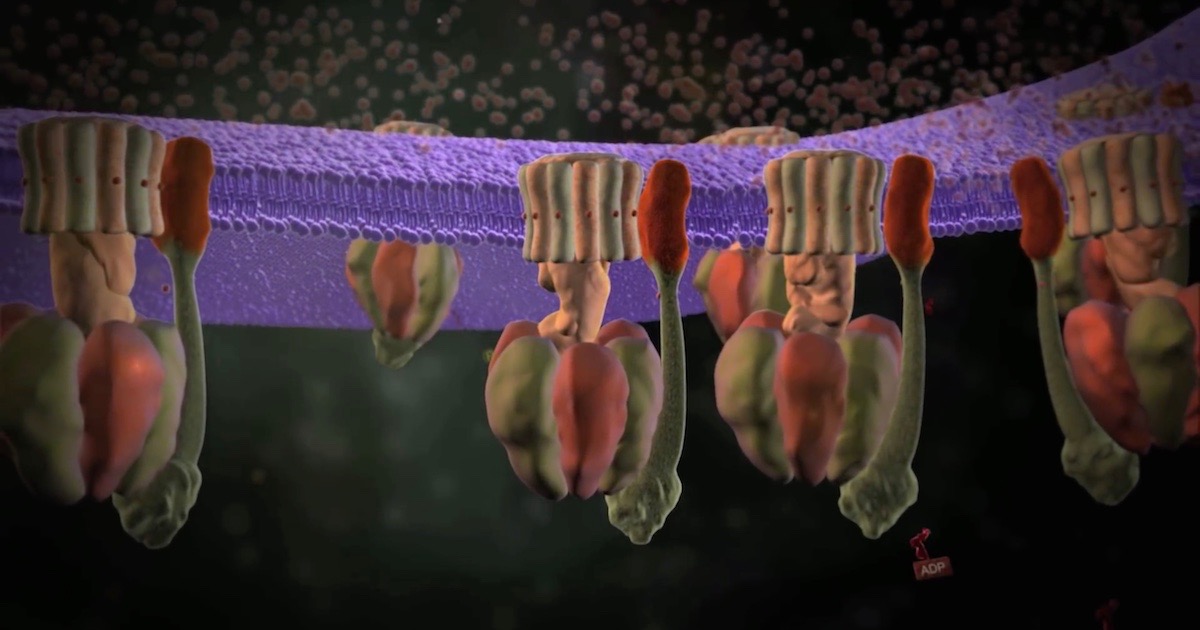 Evolution
Evolution
 Intelligent Design
Intelligent Design
The Fallacy of Evolutionary Advantage


Consider the following story:
Why are there two modes of transportation for accomplishing the same function? Bicycles and automobiles apparently emerged independently. While both provide transport, the automobile would seem to have a clear advantage in miles traveled per unit energy. Our analysis suggests a possible explanation for this apparent relationship between energy input and mechanism. When the car and the bicycle are traveling at about 10 kph, the ratio of energy expenditure per meter is about the same [for the sake of illustration]. When the conditions under which transport must occur at higher velocity are encountered, the gasoline engine mechanism may have been selected for its kinetic advantage. On the other hand, when conditions require a velocity of 10 kph or less, the foot-pedal mechanism may have been selected for other possible advantages resulting from its structural and functional simplicity.
We laugh at this silly tale, but evolutionists often employ this kind of reasoning very seriously: if something is advantageous, nature must have selected it! Since evolutionary theory forbids any appeal to intelligent causes, whatever scientists observe — no matter how intricate — must have been designed without a designer, and selected without a selector.
Here’s a recent example in PLOS ONE. Two scientists from the Department of Computational and Systems Biology at the University of Pittsburgh propounded the exact same reasoning as our story, except their machines are much smaller. But the same fallacy applies. In fact, we adapted our story from similar language in their paper, “Biophysical comparison of ATP-driven proton pumping mechanisms suggests a kinetic advantage for the rotary process depending on coupling ratio.” Notice the similarities:
ATP-driven proton pumps, which are critical to the operation of a cell, maintain cytosolic and organellar pH levels within a narrow functional range. These pumps employ two very different mechanisms: an elaborate rotary mechanism used by V-ATPase H+ pumps, and a simpler alternating access mechanism used by P-ATPase H+ pumps. Why are two different mechanisms used to perform the same function? Systematic analysis, without parameter fitting, of kinetic models of the rotary, alternating access and other possible mechanisms suggest that, when the ratio of protons transported per ATP hydrolyzed exceeds one, the one-at-a-time proton transport by the rotary mechanism is faster than other possible mechanisms across a wide range of driving conditions. When the ratio is one, there is no intrinsic difference in the free energy landscape between mechanisms, and therefore all mechanisms can exhibit the same kinetic performance. To our knowledge all known rotary pumps have an H+:ATP ratio greater than one, and all known alternating access ATP-driven proton pumps have a ratio of one. Our analysis suggests a possible explanation for this apparent relationship between coupling ratio and mechanism. When the conditions under which the pump must operate permit a coupling ratio greater than one, the rotary mechanism may have been selected for its kinetic advantage. On the other hand, when conditions require a coupling ratio of one or less, the alternating access mechanism may have been selected for other possible advantages resulting from its structural and functional simplicity. [Emphasis added.]
They are talking, mind you, about one of the most amazing molecular machines in all life: the ATP synthase rotary motor. We featured it in an animation. And as we have written about before, it comes in two types: the mitochondrial F0F1-ATPase that synthesizes ATP from a proton motive force, and the vacuolar V-ATPase that acidifies vacuoles with a similar mechanism running in reverse. Just to look at these machines in operation screams intelligent design!
The P-ATPase proton pump they refer to is no less awe-inspiring. Even though it uses a less-efficient mechanism (one proton per one ATP), it sustains critical cellular functions. The gills of young salmon, for instance, use the sodium-potassium pump (Na+/K+ P-ATPase) for adapting to seawater when exiting their natal streams, and use the pumps in reverse when returning. This animation shows that the design, while simpler than ATP synthase, is elegant and effective, like the bicycle compared to the car. Here at Evolution News, physician Howard Glicksman described the many important functions this pump accomplishes in the human body.
Now that we know about the two machines discussed in the PLOS ONE paper, do the authors ever describe how they arose by random mutations and natural selection? Of course not. To them, it’s sufficient to say, “They’re advantageous; therefore they evolved.” Full stop. In fact, the evolutionists double the miracle-working power of natural selection by saying this, fully aware of the complexity of these machines:
Two very distinct mechanisms, which most likely evolved independently, are employed for ATP-driven H+ pumps: the rotary mechanism of the V-ATPase and the alternating access mechanism used by the P-ATPases (Fig 1). The significantly more complex V-ATPase consists of 25–39 protein chains compared to a monomeric or homodimeric polypeptide for the P-ATPase. The operating mechanism for the V-ATPase is also more elaborate consisting of an electric motor-like rotary mechanism. In contrast, the P-ATPase operates by switching between two (E1 and E2) conformations similar to most allosteric mechanisms.
We should gasp at such credulity in a scientific paper. Yet the two authors, with two more colleagues, published a similar paper in the Proceedings of the National Academy of Sciences (PNAS) last year: “Biophysical comparison of ATP synthesis mechanisms shows a kinetic advantage for the rotary process.” The same fallacy is central to their whole paper: “Our analysis shows that the rotary mechanism is faster than other possible mechanisms, particularly under challenging conditions, suggesting a possible evolutionary advantage.”
Why did evolution select two very different mechanisms for ATP-driven proton pumps? Here we explore one possible consideration: the difference in kinetics, i.e. the rate of H+ pumping, between the two mechanisms, building on our recent study of ATP synthesis kinetics [the PNAS paper]. A mechanism that can pump protons faster, under the same conditions (same bioenergetic cost), may be able to respond to cellular demands and changing conditions more rapidly. Also, a faster mechanism would require a lower driving potential (bioenergetic cost) to achieve the same pumping rate compared to a slower mechanism. Such a mechanism may offer a survival advantage particularly when the difference in rates is large and in a highly competitive environment. Presumably such a mechanism would be under positive selection pressure.
The authors don’t just waltz past these statements, as if to get on to more rigorous matters. No; the Evolutionary Advantage Fallacy is central to their whole thesis. We count the word advantage 25 times, usually in an evolutionary context: in particular, evolutionary advantage or selective advantage eight times. Here it is twice in the concluding discussion:
Why are there two different mechanisms, a rotary mechanism and an alternating access mechanism, for ATP-driven proton pumps? Many factors contribute to overall evolutionary fitness, and here we focus on kinetic behavior, which is amenable to systematic analysis…. These results suggest that when driving conditions are such that a coupling ratio above one is sufficient for viable operation, the rotary mechanism may have a selective advantage. However, when a process requires a coupling ratio of one for viable operation, the alternating access mechanism may have a selective advantage because of its simplicity and corresponding lower cost of protein synthesis.
Another case of the Evolutionary Advantage Fallacy appears in PNAS. Wei Lin and ten other international colleagues think that bacteria evolved magnetotaxis because it would have been advantageous to them. “The early origin for magnetotaxis would have provided evolutionary advantages in coping with environmental challenges faced by microorganisms on early Earth,” they say. Just because the “Archean geodynamo was sufficient to support magnetotaxis,” doesn’t mean that bacteria will create genes and behaviors to make use of it. That’s like saying water creates fish.
Are these isolated cases we’re picking on? A quick search on Google Scholar for “evolutionary advantage” yields over 32,000 hits. In our experience, this is a frequently used phrase that is usually devoid of any detailed description of how random mutations and natural selection could have achieved the said advantages. The simplistic syllogism, “It’s advantageous, therefore it evolved,” is not a scientific theory. It’s mere word salad.
Image: ATP synthase rotary motor, via Discovery Institute.
